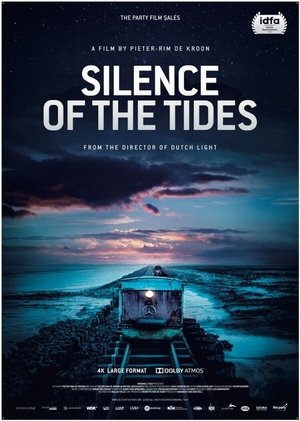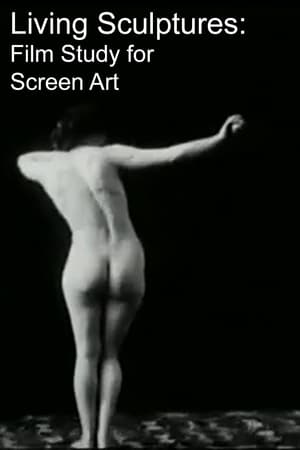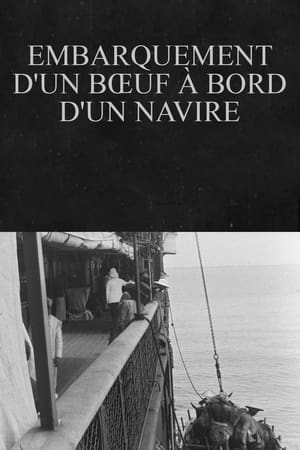

Terre magellaniche(1933)
The film Terre Magellaniche represents the fruit of multiple and risky trips that the explorer Alberto M. De Agostini made in the Patagonian mountain range and in the Tierra del Fuego archipelago. Executed with rare mastery and exquisite artistic sense, the film shows the explorer in the labyrinth of Patagonian channels, penetrating the deep fjords between large masses of floating ice of curious shapes, coming from the immense glaciers that descend from the Cordillera and bathe its frontal walls on the waters of the sea. Transported to regions of extraordinary beauty, situated in front of gigantic mountains, from which majestic waterfalls rush, the viewer experiences the illusion of finding themselves in a mysterious kingdom of dream and enchantment.
Movie: Terre magellaniche

Terre magellaniche
HomePage
Overview
The film Terre Magellaniche represents the fruit of multiple and risky trips that the explorer Alberto M. De Agostini made in the Patagonian mountain range and in the Tierra del Fuego archipelago. Executed with rare mastery and exquisite artistic sense, the film shows the explorer in the labyrinth of Patagonian channels, penetrating the deep fjords between large masses of floating ice of curious shapes, coming from the immense glaciers that descend from the Cordillera and bathe its frontal walls on the waters of the sea. Transported to regions of extraordinary beauty, situated in front of gigantic mountains, from which majestic waterfalls rush, the viewer experiences the illusion of finding themselves in a mysterious kingdom of dream and enchantment.
Release Date
1933-05-25
Average
0
Rating:
0.0 startsTagline
Genres
Languages:
No LanguageKeywords
Similar Movies
 8.0
8.0Horror Europa with Mark Gatiss(en)
Actor and writer Mark Gatiss embarks on a chilling journey through European horror cinema, from the silent nightmares of German Expressionism in the 1920s to the Belgian lesbian vampires in the 1970s, from the black-gloved killers of Italian bloody giallo cinema to the ghosts of the Spanish Civil War, and finally reveals how Europe's turbulent 20th century forged its ground-breaking horror tradition.
 6.0
6.0Silence of the Tides(nl)
The passage of time is spellbinding in this cinematic tour de force about the Wadden Sea. A film that inhales and exhales along with the tides as it explores the fragile relationship between man and nature.
Japonaise faisant sa toilette(fr)
A young woman in traditional Japanese attire fixes her hair and kimono while her servants assist her.
Voltige à cheval à Prague(fr)
A group of riders demonstrate equestrian vaulting, or voltige, on the outskirts of Prague.
 7.0
7.0The Beginning of Life 2: Outside(pt)
Genuine connections between children and nature can revolutionize our future. But is this discovery still possible in the world's major urban centers? The new chapter of "The Beginning of Life" reveals the transformative power of this concept.
 7.3
7.3Attenborough's Journey(en)
Following David Attenborough as he travels the globe to film his series, David Attenborough's First Life, in which he explores the very origins of life on Earth. David journeys to the parts of the world which have had special meaning to him during his 50 years of broadcasting. Beginning near his boyhood Leicestershire home, where he first collected fossils, he then travels to Morocco's arid deserts, the glaciers of Canada and crystal clear waters of Australia's Great Barrier Reef. As a prelude to the First Life series, Attenborough's Journey provides a unique insight into the mind and character of one of the world's most iconic broadcasters as he shares his passions for the natural world. Combining his global journey for First Life and archive material looking back at his illustrious career both as a programme maker and a controller of the BBC, the film reveals what makes him tick.
 5.1
5.1Vue prise d'une baleinière en marche(en)
Sailors row a whaling boat in a medium-tight shot.
Palace of Electricity(en)
A panoramic shot, making a full circle, at the 1900 Paris Exposition. It begins and ends looking at the front of the Palace of Electricity. As it pans, first we see a workman hosing down the promenade. Men and women walk past, all wearing hats. We see the base of the Eiffel Tower, which the Palace faces. A couple strolls. A mother and daughter walk passed, father is slightly ahead wearing a boater. Three men in uniform walk toward the camera as it comes to a stop facing the Palace.
 5.6
5.6Panorama of Eiffel Tower(en)
“Showing the entire height of this wonderful structure from the base of the dome and return, with the great Paris Exposition in the background, looking down Champs de Mars. A most realistic picture.” According to Edison film historian Charles Musser, this film features the first camera tilt among the company's surviving oeuvre.
 5.5
5.5A Nymph of the Waves(en)
A woman in ballet slippers wearing a large white hat and a long white dress - with ruffles, puffy sleeves and petticoats - dances across water with roiling waves behind her. She holds the edges of the skirt with her hands, lifting and twirling, sometimes exposing her bloomers and a dark garter on one leg. Her style combines ballet with the exuberant kicks and twirls of a burlesque dance hall. With churning waves behind her, the water seems to wash beneath her feet. The film of the dancer, "M'lle. Cathrina Bartho" (1899), is superimposed on that of the water, "Upper Rapids, from Bridge" (1896).
 5.7
5.7Opium Den(fr)
A century-old film depicting opium smokers in French Indochina (Vietnam).
 6.1
6.1Le village de Namo - Panorama pris d'une chaise à porteurs(fr)
The film is a panorama shot-scene lasting just under a minute. The panorama film, as coined by Lumière, is a moving-camera shot--usually accomplished by placing the camera on a moving transport, such as a boat or train.
Scene from the Elevator Ascending Eiffel Tower(en)
“A marvelously clear picture taken from the top of the elevator of the Eiffel Tower during going up and coming down of the car. This wonderful tower is 1,000 feet in height, and the picture produces a most sensational effect. As the camera leaves the ground and rises to the top of the tower, the enormous white city opens out to the view of the astonished spectator. Arriving at the top of the tower, a bird's eye view of the Exposition looking toward the Trocadero, and also toward the Palace of Electricity, is made, and the camera begins its descent. The entire trip is shown on a 200-foot film. 30.00. We furnish the ascent in 125 foot film.” (Edison film catalog)
 6.0
6.0Living Sculptures: Film Study for Screen Artist(de)
A nude couple pose in an art studio on a square rug, while the camera does a circular traveling around them; the woman has her right knee on the floor and her right arm raised in front of her face, holding the man's thighs with her right, while the man is bent forward, as if looking in the distance.
Panorama View, Street Car Motor Room(en)
A camera moving forward on an overhead crane gives a traveling view of men working on machinery. Carts carrying parts and pieces of machinery pass by on rails; cranes lift machinery; and men perform their various duties, including hammering objects. (Library of Congress)
Treloar and Miss Marshall, Prize Winners at the Physical Culture Show in Madison Square Garden(en)
Opens with a woman posing on a pedestal, dressed in a white body leotard with a sash tied at her hips. Marshall continues with various feminine poses, reminiscent of classic Greek statuary, to accentuate her figure. Film cuts to Treloar posed on the bare stage without a pedestal. He wears brief leopard-skin trunks or short tunic, wrist bands, and Roman-looking laced sandals. His poses accentuate the muscular development of his upper body, particularly that of his arms, and include movements that make the muscles jump. Treloar finishes with a slight nod to the camera.
Bird's-Eye View of San Francisco, Cal., from a Balloon(en)
Taken while ascending some 2,000 yards into the clouds, and represents a most diversified view of the city of San Francisco, the Golden Gate, Pacific Ocean, and surrounding country for miles. The huge balloon from which this picture was taken is 75 feet in diameter, 250 feet in circumference and about 105 feet high, and it requires some 150,000 feet of gas to raise it from the ground.

